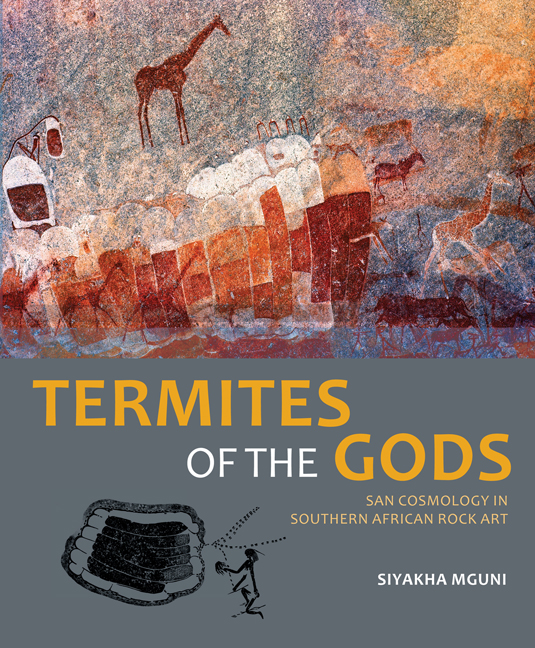Book contents
- Frontmatter
- Dedication
- Contents
- Acknowledgements
- Foreword
- Maps
- Explanatory notes
- Preface: Searching the pasts
- Introduction
- Chapter 1 Ancient mysteries on rocks
- Chapter 2 Meaning in San rock art
- Chapter 3 Tricksters, potency and dance
- Chapter 4 Ways of seeing San rock art
- Chapter 5 Probing deep into formlings
- Chapter 6 Formlings and San cosmological belief
- Chapter 7 Symbolic theatres of San cosmos
- Notes
- List of maps and figures
- Picture credits
- References
- Index
Chapter 1 - Ancient mysteries on rocks
Published online by Cambridge University Press: 21 April 2018
- Frontmatter
- Dedication
- Contents
- Acknowledgements
- Foreword
- Maps
- Explanatory notes
- Preface: Searching the pasts
- Introduction
- Chapter 1 Ancient mysteries on rocks
- Chapter 2 Meaning in San rock art
- Chapter 3 Tricksters, potency and dance
- Chapter 4 Ways of seeing San rock art
- Chapter 5 Probing deep into formlings
- Chapter 6 Formlings and San cosmological belief
- Chapter 7 Symbolic theatres of San cosmos
- Notes
- List of maps and figures
- Picture credits
- References
- Index
Summary
I, too, am completely puzzled by the purpose or meaning of these often most complicated patterns … Clearly, the artist and his contemporaries considered these patterns of paramount importance because they appear … from one end of Rhodesia to the other
Cranmer Cooke, one of the most prolific writers on the rock paintings and archaeology in Zimbabwe between the 1950s and 1970s, despaired about the identification and meaning of formlings. I started off similarly, with a sense of trepidation at the enormous task ahead of me as I began my journey of identifying and interpreting this San rock painting theme which, for over a century, had evaded the explanatory efforts of generations of influential southern African archaeologists. They had wrestled with this image category of ancient rock art without a satisfactory explanation and in despair, Cooke had urged ‘whatever conclusion the imagination leads the observer’. After all, he had ‘discussed this form of painting with a number of African tribesmen, but none of them has given me the slightest help in identifying the objects portrayed. Therefore I leave the reader to reach his [sic] own conclusion on these very important but puzzling forms’. In other words, there was no hope of ever understanding the motivation and significance of formlings. Yet as I embarked on this study, I could see a spark of light at the end of the tunnel. Although we may not have adequate answers to all our questions on the nature of things, especially things past, we can enjoy glimpses that we unravel and marvel at as portions of a largely vanished ancient story. I begin this journey by defining, as precisely as possible, the distinctive features of formlings and then recount the methodological steps I took to reach my understanding of their essence and meaning.
One of the leading German prehistorians and ethnographic explorers in the first half of the twentieth century, Leo Frobenius visited southern Africa in his continent-wide expeditions into various parts of Africa in the early 1900s. In the late 1920s, following his wide-ranging study of several cultural aspects of the region, he said with regard to ancient rock art: ‘[O]ddities occur which are completely outside our understanding. There are large forms, shaped like galls or livers, into which human figures are painted.’
- Type
- Chapter
- Information
- Termites of the GodsSan cosmology in southern African rock art, pp. 12 - 29Publisher: Wits University PressPrint publication year: 2015



